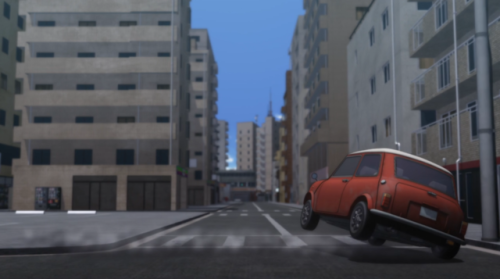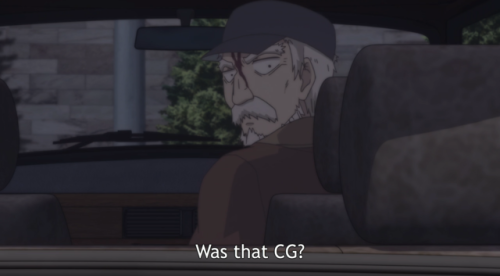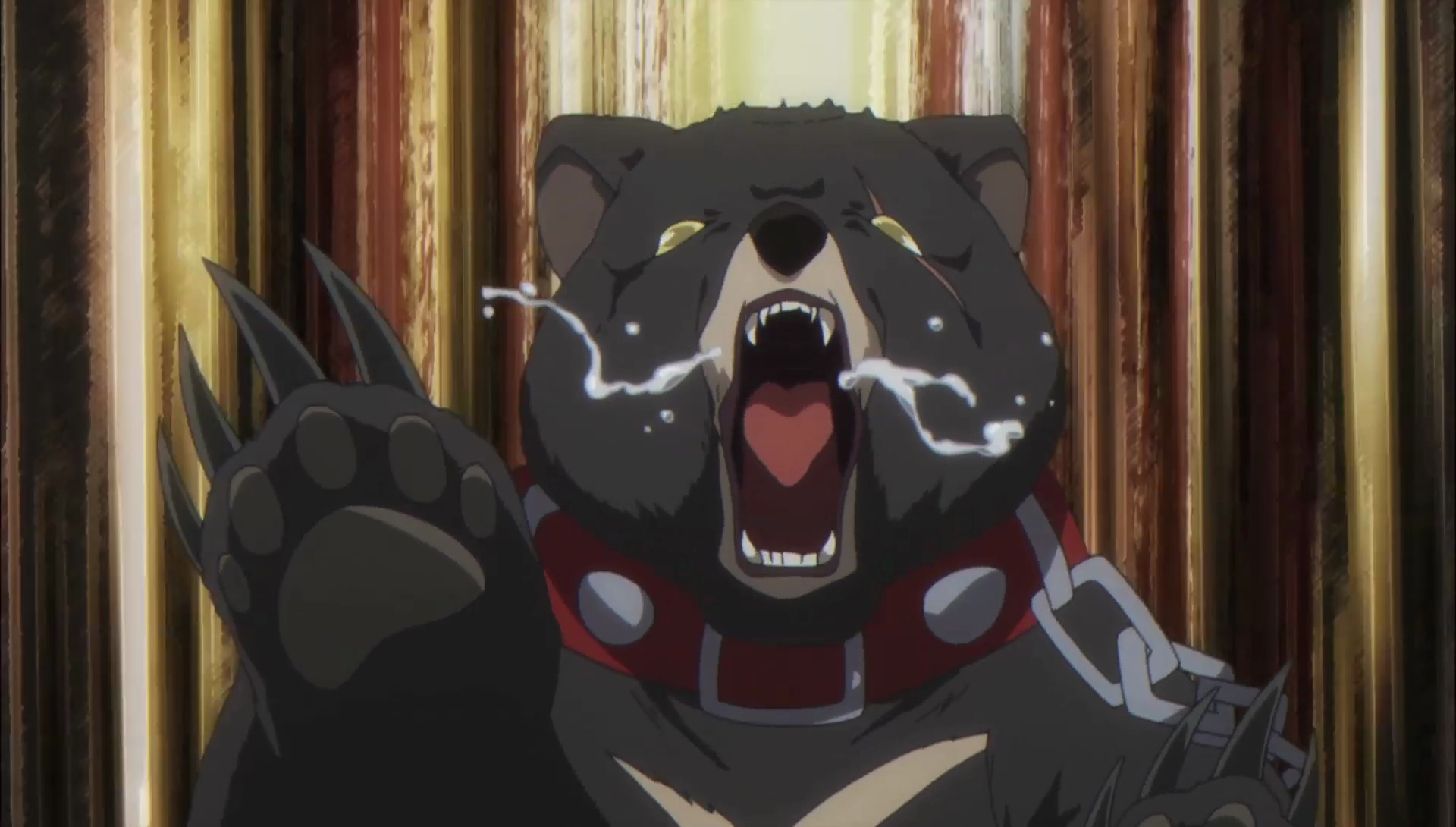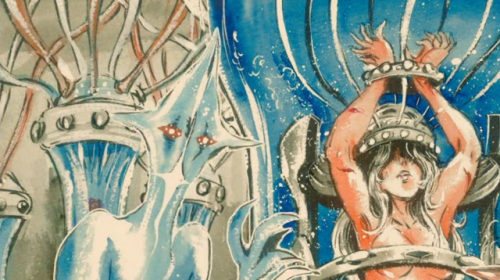04.05
Akashic Records of Bastard Magical Instructor Yes That Really Is The Title Look For it Wherever Videotapes Are Sold.

At that moment I could feel my soul escaping my body, leaving it a lifeless husk doomed to wander the wasteland that was the present. This was the price I would have to pay for watching Akashic Records of Bastard Magical Instructor, the slow agony of a crippled, broken existance combined with general self-doubt and intense self-loathing.
P.S. Fuck you Rynnec.
Hey guys!!! This year has been pretty quiet hasn’t it? You know what we haven’t had at all this season? MAAAAAGIC SCHOOOLZ! AWWWWWWW YEAAAAAAAAAAAAAAAAAAAAAAAAAAAAAAAAAAAAAAAAAAAAAAAAAAAAAAAAAAAAAAAAAAAAAAAAAAAAAADFADGADGAFDAGADSGDSAHF! Oh boy I am so excited to watch Onegai Bastard! WOOOO HOOOOOOOOoooooooo
…he lied.
Oh look! Tsunderes! Delinquents! Recycled character designs from other anime that sucked (Oh Hi Leonmitchelli Gallete des Roi!)! No plot! No characters! All comedy! No jokes! Oh look that cat girl is fondling blond girl! THIS ISN’T A YURI! DROPPED! – Lord Dalek
Alice & Zoroku
I like fairy tales, stories about parenthood, and jaded old badasses, so Alice & Zoroku conceptually appealed to me from the start. The show went the extra mile by beginning with an exciting, intriguing action-chase scene that drops us in-media res into Sanae’s escape and a battle between her pursuer and maid-like ally. The premise isn’t out of the ordinary – a mysterious girl with special powers and potentially from a fantasy world stumbles upon our world and finds a male counterpart to help her – but the execution is at least atypical. Rather than a buxom tsundere teenager Sanae is a little girl and her companion ends up being not a bland-looking milquetoast teenage boy but a grumpy old man who has no patience for any bull-shit. Zoroku is really the character that makes this show. His nonplussed and reasonably reactions display a maturity and rationality that most teenage fantasy protagonists don’t have, and he’s very smart and straightforward about everything he does leaving no room for dumb misunderstandings or unnecessary complications. He’s just so competent and responsible, without any obnoxious attitude baggage yet still possesses a strong, distinct personality. The fact that he’s also a big softie deep down who looks out for kids in trouble and is a florist even Yakuza respect is a fun contrast to his outward appearance and behavior that gives him major charm points in my book. I really wish there were more anime protagonists like him these days. I don’t think I’ve liked one this much off the bat in quite some time.
Though Zoroku makes the strongest first impression, I like Sanae quite a bit too. She’s a precocious little brat, but a believable one. She feels very childlike in a believable way, which is a hard line to balance in making a character like her tolerable. Moments where she’s lusting for food, tearfully enjoying a good meal, being chastised and learning lessons from Zoroku, all help reinforce that she’s an innocent kid, one who has a lot to learn not only about using her powers wisely, but how to be a good human being. The defining moment of the episode for me was when Zoroku tells Sanae that she had essentially blackmailed him by mentioning his granddaughter thereby getting her involved, to which she is taken aback, and meekly replies that wasn’t her intention. Zoroku firmly delineates the difference between a request and a demand to her, and that the latter, especially presented in the way she had done, was “crooked” and a bad thing to do. We don’t need to hear her reply to know she understands this, her reaction shows she’s really thinking about what Zoroku’s just said to her, and will learn from this mistake.
I think moments like this, the parenting moments between Zoroku and Sanae and the surrogate father-daughter relationship they form, are going to be the emotional center of the show, and this episode establishes their dynamic very promisingly. I’m already emotionally invested in these characters, and alongside the general mystery of the “Dreams of Alice” project, some fun side characters like the twins, great pacing and atmosphere, and a lot of appreciative attention to detail (I love how the convenience store worker is like cheering Zoroku on when he’s trying to get Sanae to talk to him), there’s a lot of promise in this show and I daresay it might be my favorite of the season so far. About the only downside is that the CG cars aren’t very well-rendered and stick out like a sore front against the show’s otherwise beautiful aesthetic, but it’s not something I feel is worth getting bothered by when the rest of the show is executed so well. In a season overrun with yet more bullshit magic high schools and fantasy video game worlds and (admittedly good) sequels to long-running established shonen shows, Alice & Zoroku is charmingly cute and refreshingly atypical. Unless you don’t appreciate a good SOL fantasy show or really hate the CG cars for some reason, it’s worth checking out. – LumRanmaYasha
Armed Girls’ Machiavellism
I feel that I have come to the point this season where I could simply post the lyrics of America’s 1972 hit “A Horse With No Name” as a write-up for any of these shows. Not simply because it is completely accurate but it would save me time before the next dumpster fire I’ll have to watch. So what’s on the docket this time? Oh its..oh.oh.ohhhhhhhhhhhhhhhhhhhhhhhhhhhhhhhhhhhhhhhh.
Basically this is Prison School!…if it was a shitty light novel show made by Silver Link =(. It has some of the same parts as that earlier cringecom but now with an extra splash of Gary Stu protagonists, recycled Precure villain designs, and 50% less animation but 100% more random bear. Does any of this really matter at this point? Nope. It never did.
So where was I? Oh yeah… On the first part of the journey, I was looking at all the life. There were plants and birds and rocks and things…There was sand and hills and rings The first thing I met was a fly with a buzz and the sky with no clouds. The heat was hot and the ground was dry but the air was full of sooound.
YOU SEE I’VE BEEN THROUGH THE DESERT ON A HORSE WITH NO NAME, IT FELT GOOD TO BE OUT OF THE RAIIIIIIN. IN THE DESERT YOU CAN REMEMBER YOUR NAAAME ‘CAUSE THERE AIN’T NO ONE FOR TO GIVE YOU NO PAIN. LA LAAAA LA LA LA LA LA LA LA LA LA LA LA LA LA LA LAAAAA LA LA LAAAAAAAAAAAAAAAAAAAA. – Lord Dalek
BORT
I know that the Naruto train is still too lucrative to stop yet. I’m aware there was an ongoing Bort manga a while back. But everything about this first episode feels like it shouldn’t be. Another debut of a knucklehead ninja who gets his friends in trouble and makes a fool out of the Hokage? Besides the lack of a nine-tailed fox in his naval, and having a not-dead mom, I’m not even sure what the difference between Bort and his dad are. I’m thinking back to complaints over The Force Awakens being a soft reboot of Star Wars because it adhered too closely to that film, and that’s what this episode feels like. Yet more Naruto. I guess going back to the style of the very first episodes makes a change of pace after the Great Ninja War and Kaguya plots from the end of its father show, but I didn’t think the first episode of Naruto was a strong opening when I first saw it. And making a redux of that is a little bore-inducing.
You know in that one Dragon Ball GT movie with Goku’s great-great grandson who goes on adventures with his own friends, and everyone there looked off? It looked 60% Toriyama-ish, but not enough to look like he even drew it on a bad day, so you get Uncanny Valley’d by the designs. That’s what I found in Bort. I don’t know any better because I haven’t read the Bort manga, but the plot with Denki and seeking strength to face his father felt straight out of the depths of filler hell from a decade back. Even the main characters look like they were drawn for a filler arc and not the spearhead to the next generation of this franchise. I don’t even care for Kishimoto’s artwork, but when you place a character he made next to one from those movies or an episode not adapted from the manga, you see a stark difference in effort put into the two. Perhaps it’s cruel to call this the GT of Naruto, but it is. An overtread of a series fans have already seen several hundred episodes of, that I’m sure someone higher-up in the near future will cite as non-canon and make a new sequel called Naruto Super. Or maybe some disgruntled fans will make their own follow up called Naruto Multiverse or Naruto AF. Or an offshoot porn company will make a crossover called Pretty Cure and 5 Kagez. – BloodyMarquis
The Laughing Salesman NEW
Based from a late 60’s manga and late 80’s anime by Fujiko Fujio A, one-half the team responsible for Obake no Q-taro and the creator of Ninja Hattori (not Doraemon, that was Fujiko F. Fujio, different guy), The Laughing Salesman is a modern update of a formula that’s more or less stayed the same for the past 50 years. The titular laughing salesman Moguro preys on his clients’ emotional weaknesses and lofty desires and gives them a figurative monkey’s paw that will always, without fail, lead to their financial destitution, personal humiliation, or both. Oftentimes his victims are conventionally sympathetic, but the theme of the show is that his clients want things they do not need or deserve, but have been conditioned to yearn for them by an oppressively commercialized environment and workaholic capitalist lifestyle.
Moguro is the laughing salesman not simply because he takes pleasure in his victims’ downfall, but because he is genuinely happy with his career and place in life. In contrast to his clients, he is one of the few who benefits from and is happy living in this economic environment, profiting of the misery of those who cannot thrive within it. Considering the manga was created during a period in which Japan was finally recovering economically and a wealthier, more financially-driven lifestyle was coming in vogue, The Laughing Salesman provides a strict critique of blind capitalist indulgence, that happiness can be bought without expense, and the idea that you can buy happiness in the first place.
That his victims are often so sympathetic and relatable only emboldens the dangerous nature of the exchanges they partake in. The pleasures and gifts Moguro gives could be healthily indulged in, at least in moderation. His clients suffer consequences only because they’re never satisfied, and always want to indulge in their fantasies and pleasures more, without thinking about whether they can afford to do so. That is exactly what Moguro, what the capitalist machine, wants them to do, and he profits off the misery and mistakes they beget, unsympathetic to whether they can pay what they’ve bought back. With so many people not just in Japan but even in the U.S. suffering from extensive credit card debt and high-interest loans to pay for things that ultimately haven’t satisfied their emotional lack or helped them be happier, it’s easy to see why this show has been rebooted in the modern day.
The opening sequence in particular deftly describes the show’s contempt for oppressive capitalism and commercialization in wonderfully abstract terms. It depicts people trudging to work, constrained and treated as commodities by a system that doesn’t value human happiness, capturing the oppressive, harmful nature of the modern japanese working life. All the while, the sinister face of Moguro is omnipresent, representing the forces of capitalist exploitation that convince them to buy things they cannot afford and sink themselves further into debt, and deeper into despair. The show itself doesn’t capture that sinister omnipresence of Moguro quite as well as the opening describes it, but the second story in particular makes his insidious and constant persistence to interfere and destroy the lives of his victims perfectly uncomfortable, from him somehow knowing the OL lady’s thoughts and being there right when she’s thinking of her problems, to his face appearing on the wall of a dark alleyway she’s walking towards after an otherwise fun night on the town. Moguro’s design is the perfect blend of goofy simplicity and readily recognizable symbolic iconography that makes him a brilliantly effective antagonist for these parables.
But while The Laughing Salesman is an interesting social critique with a fun antagonist, the fact I’ve been able to thoroughly dissect its essence in a single episode without having any prior exposure might warrant reasonable fears that it’s message will wear thin and feel repetitive the longer it runs, especially due to the show’s episodic nature. Then again, there’s a certain appeal I find in franchises like the Fujio pair’s previous works Doraemon and Ninja Hattori, that are ostensibly the same plot every week but manage to keep fresh through engaging characters and well-executed storytelling. Like those shows, Laughing Salesman is not going to appeal to Otaku or the general western anime fan audience, but to guys like me who appreciate charming moral parables with a touch of clever social satire and more simplified and cartoonish character designs. So while I’m not sure the show will be saying something new every week, I’m reasonably confident I’m going to enjoy it every time. And that’s a transaction I can get behind.
Also, it’s OP and ED are the best I’ve seen out of this season so far. AOT’s don’t even come close, imo. Haven’t seen much else out of this season yet, but it’s going to be damn hard to top them. – LumRanmaYasha
The World YAMIZUKAN
The World Yamizukan is a refreshing five-minute shot of horror and sci-fi, rendered through a beautifully detailed picture book style reminiscent of sci-fi comic books of the 50’s and 60’s. Like a lot of sci-fi short stories, TWY looks to tell simple parables through horror stories with morbid, ironic twists. I’m nostalgic for this kind of straightforward simple sci-fi horror, free from a need to modernize with detached ironic humor or self-aware parody. The shorts throwback horror comic-inspired character designs, washed out watercolors, and cut-out animation provides a perfect atmosphere and aesthetic to communicate these stories visually while the chilling sound design and music and Twilight Zone-esque voiceover provides a perfect audial accompaniment. Five minutes a week well worth your time I’d say. – LumRanmaYasha





